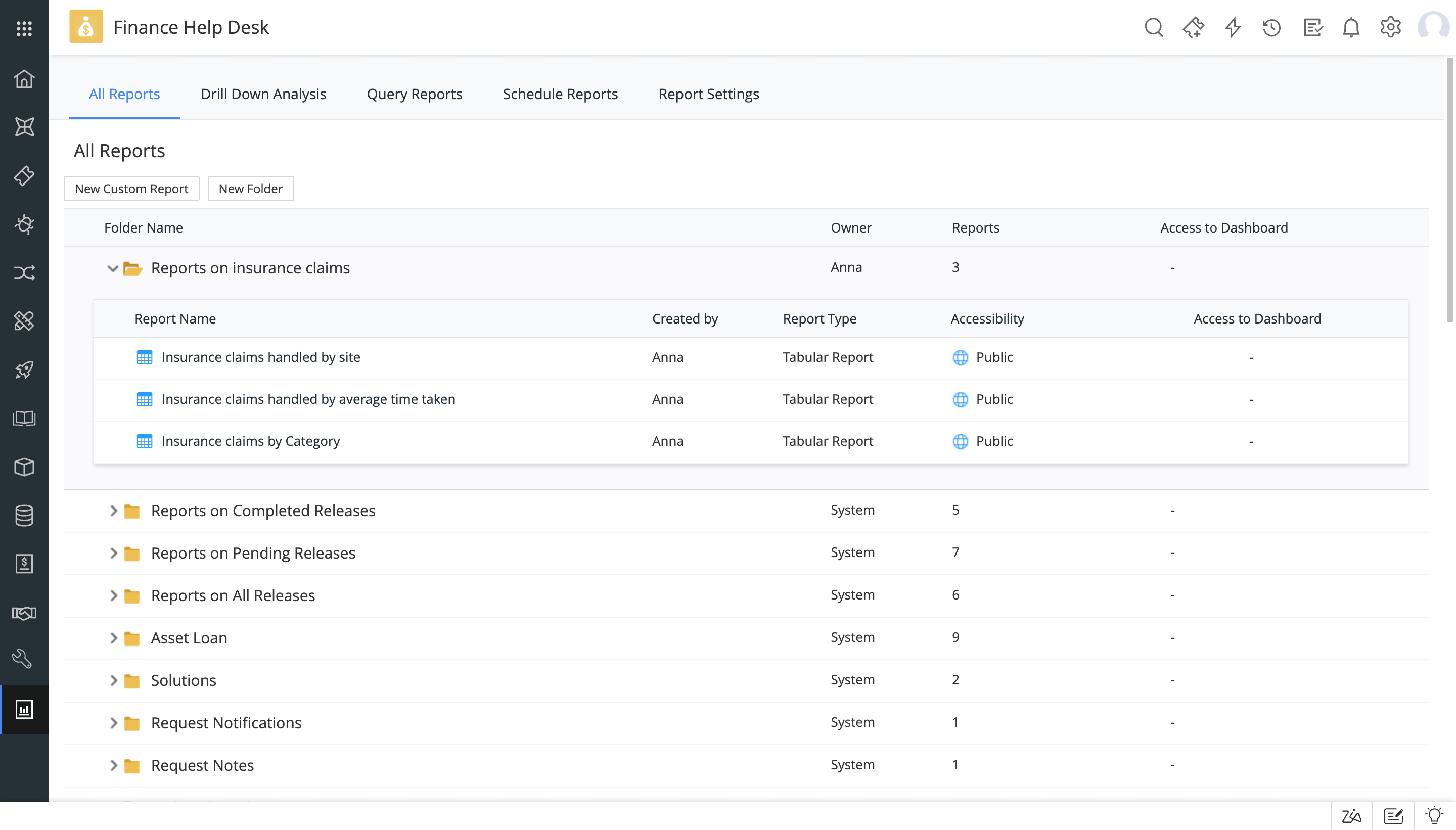Financial teams are the cornerstone of your organization, fueling strategic decisions to align business functions with organizational goals. They are one of the foremost teams to embrace digital transformation. However, they rely on disparate tools to manage multiple financial processes, like budgeting, accounting, billing, and invoicing. Furthermore, information is dispersed across departments, so finance teams struggle with data silos. For instance, when employees raise finance requests to explore entitlements like credit eligibility, finance teams might not be able to furnish the information on time. The finance teams may also be unaware of the priority of such requests. Moreover, they have to reach out to the HR teams to gather relevant details about the reporting managers of the employees to ensure the approval of finance requests. This causes unresponsive service delivery and an unsatisfactory user experience.
Finance teams need to conquer the following six hurdles to ensure frictionless service delivery:

Delayed responses to financial incidents
Employees log financial incidents, such as crediting a salary to the wrong account and reimbursement failures, via multiple channels, like phone calls, emails, or walk-ins. When finance teams use primitive channels like Excel sheets to handle incidents, they grapple with unstructured information and data deficiency. Therefore, when employees face major financial incidents, like payment failures caused by non-functional credit cards, finance teams might be ineffective at resolving them on time, which might lead to the disruption of services. For instance, if corporate credit cards fail when managers seek to renew software subscriptions, this can terminate the software services, bringing the functioning of business teams to a grinding halt.
Financial services being decoupled
from business requirements
Finance teams deliver services related to payments, invoices, accounts, and more to business units inside and outside their organizations. While finance teams are responsible for the smooth operation of financial services, they can be unprepared to deliver services according to the requirements of various business units. For example, when marketing and creative teams receive invoices from vendors across the world, finance teams face the challenge of processing invoices issued from various countries with different currencies. This delays the provisioning of services from vendors, impeding the timely completion of tasks, like organizing tradeshows or webinars, for marketing and creative teams.


Unplanned financial changes
causing business downtime
Finance teams are at the helm of the financial infrastructure and technological changes to ensure operational efficiency. Ideally, they coordinate changes like platform migrations with IT teams. But, given app sprawl, finance teams purchase and use SaaS financial applications without keeping IT teams in the loop, resulting in shadow IT. Such changes increase security and business risks. Furthermore, finance teams might make far-reaching changes in financial policies without systematic planning, risk assessment, and cross-departmental collaboration. Such haphazard changes might affect the standards of financial services across the organization.
The lack of a centralized view of
purchases and contracts
Business teams raise purchase requests according to their functional requirements and sign contracts with vendors to maintain service standards. As constituent business teams diversify their functions, finance teams might find it challenging to track their transactions without a consolidated view of them. Also, without automated approval mechanisms, finance teams have a hard time processing purchases and contracts systematically.


The lack of finance-ready self-service
Employees often have questions about the financial services and benefits offered by their organization. These vary from simple tax-related questions to complex ones about financial guidelines and insurance policies. Even if finance teams undertake periodic training sessions, they might fall short in deflecting Level 1 tickets requesting routine financial information. As a result, employees face an information crunch as they are not equipped with knowledge articles and FAQs to answer common financial questions.
A blurry vision of the metrics of finance teams
As organizations scale up their operations, employees raise more finance requests. Small finance teams might grapple with old-fashioned tools that provide superficial information. Due to a lack of sophisticated analytical tools, they might not be able to track metrics for financial incidents, like the number of credit card failures, payroll glitches by banks, and issues with filing insurance claims.

How you can make the most of ServiceDesk Plus
Ensure financial incidents are resolved promptly with custom templates and no-code automation
- Build dynamic templates to report financial incidents, like credit card issues and reimbursement failures.
- Capture relevant details, prioritize financial incidents, and route them to finance specialists automatically.
- Design condition-based actions to guide your finance ticket life cycle.
- Ensure around-the-clock availability of finance agents using round-robin assignment, load balancing, and Zia prediction to quickly handle financial incidents like the incorrect mapping of bank accounts.
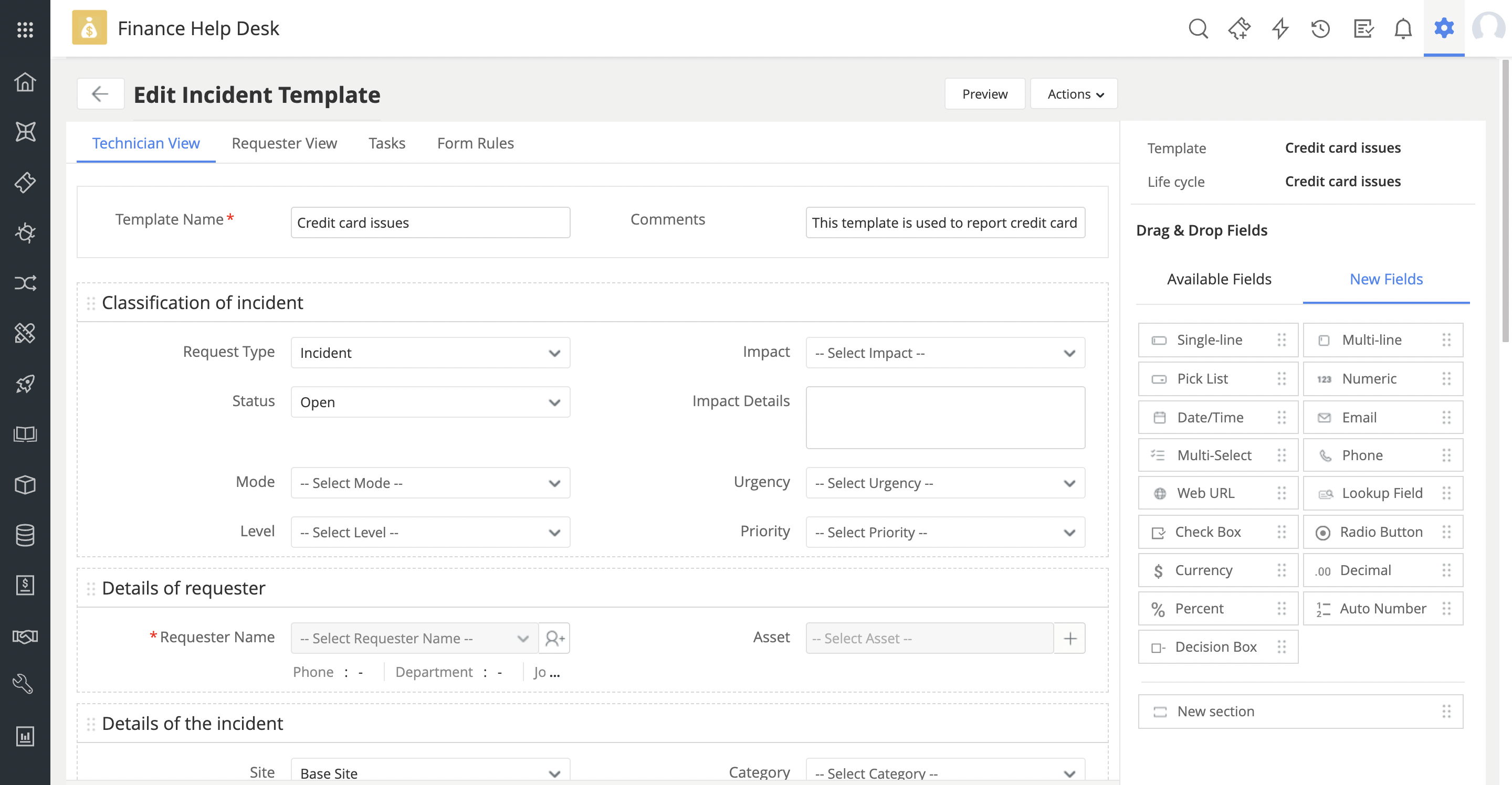
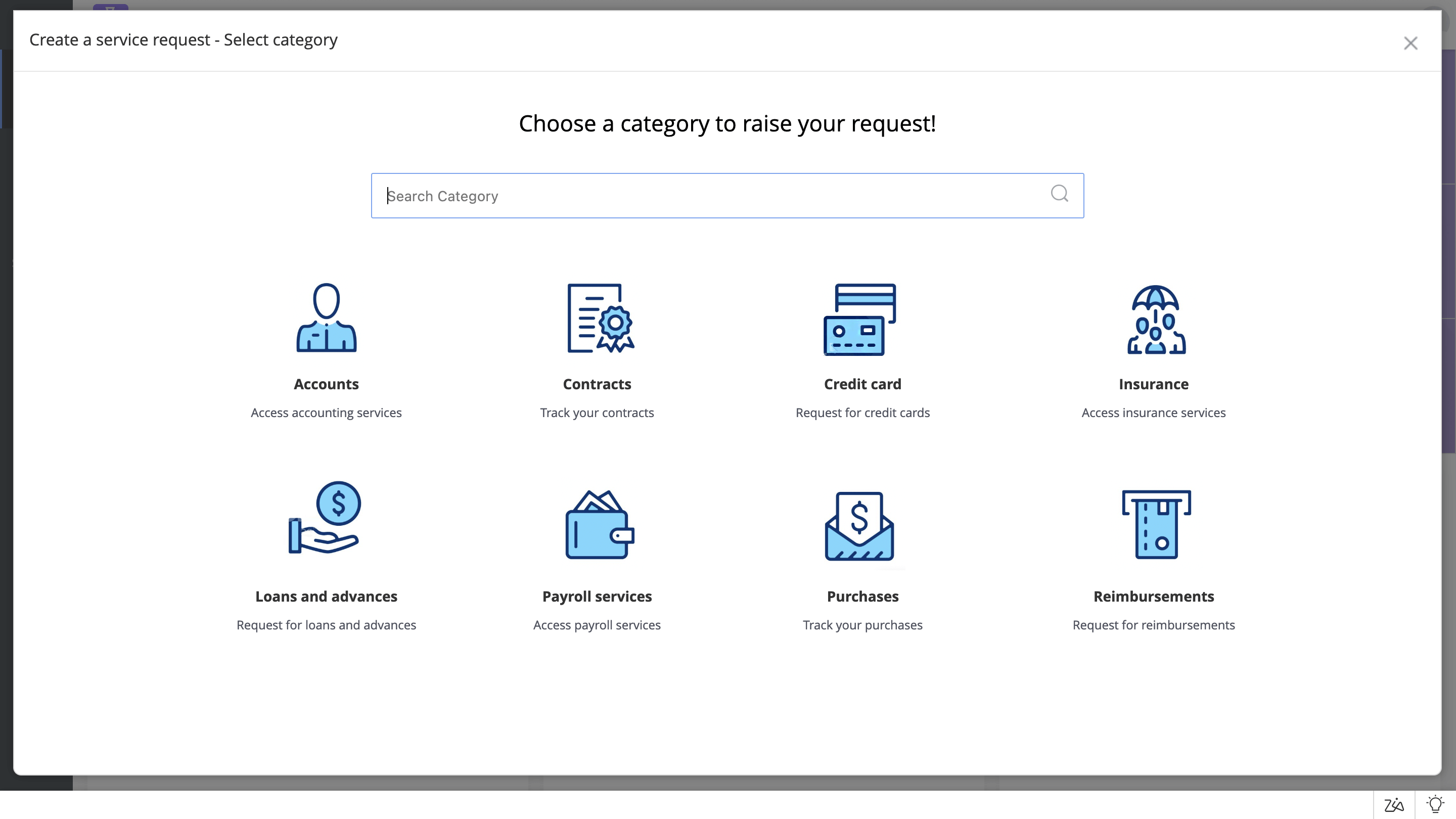
Employ a diversified financial service catalog to deliver a consumer-grade experience
- Exhibit financial services, including payroll, invoices, and accounts, to achieve a shopping cart experience for end users.
- Honor deadlines for delivering financial services using SLAs.
- Configure role-based access permissions for finance requests, like approvals of travel expenses and invoices.
- Streamline financial services with a built-in, five-stage approval mechanism.
- Encourage collaboration by assigning financial tasks and mapping task dependencies.
Guide agents through finance tickets using no-code
visual workflows
- Standardize the life cycle of finance tickets from initiation to closure.
- Route tickets to finance experts and streamline efforts by configuring financial tasks.
- Configure approvals automatically to carry out financial policy and technological changes on time. Send notifications periodically to let stakeholders stay aware of the statuses of their finance requests, changes to finance policies, revisions to insurance premiums, and more.
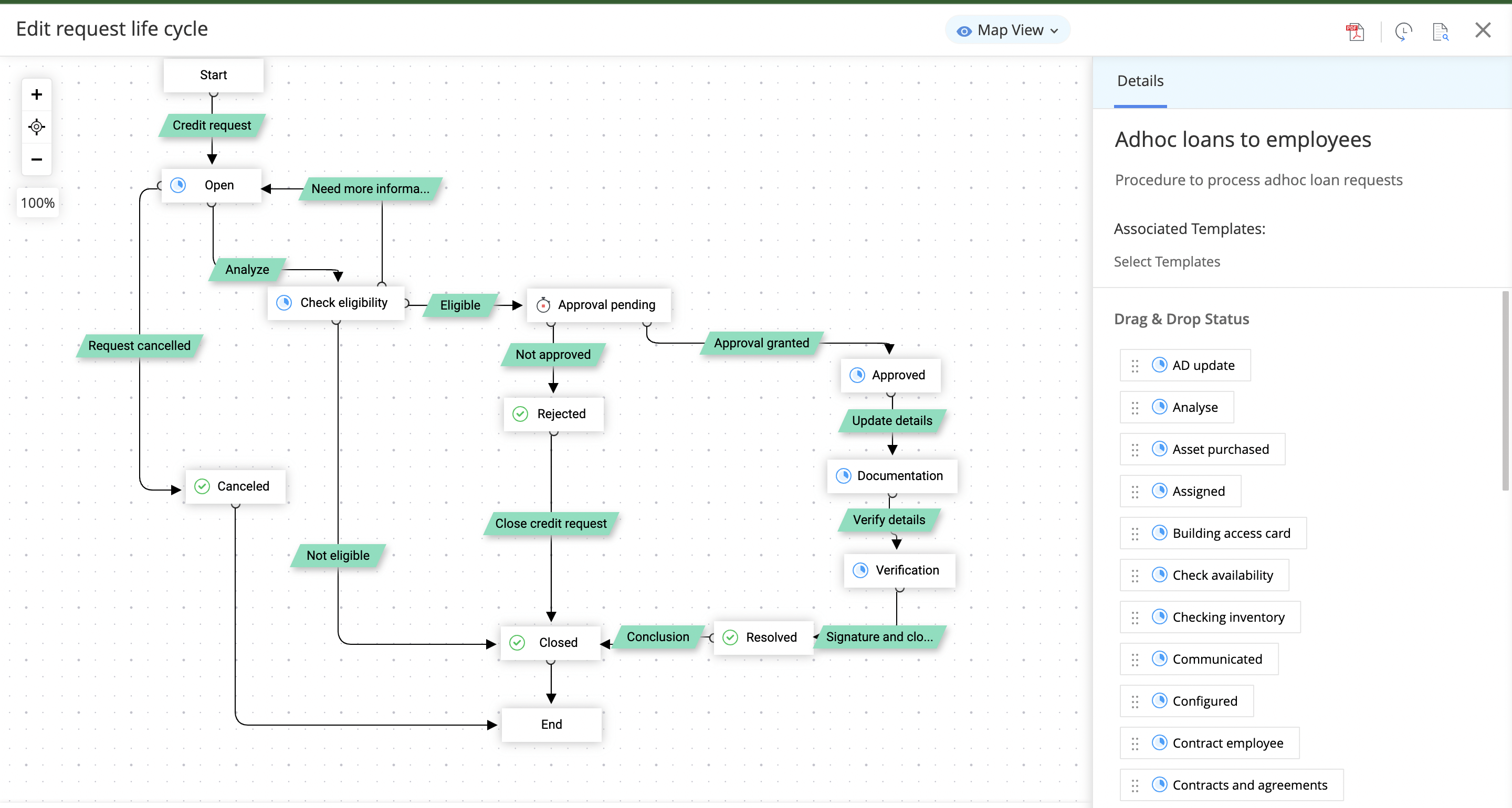
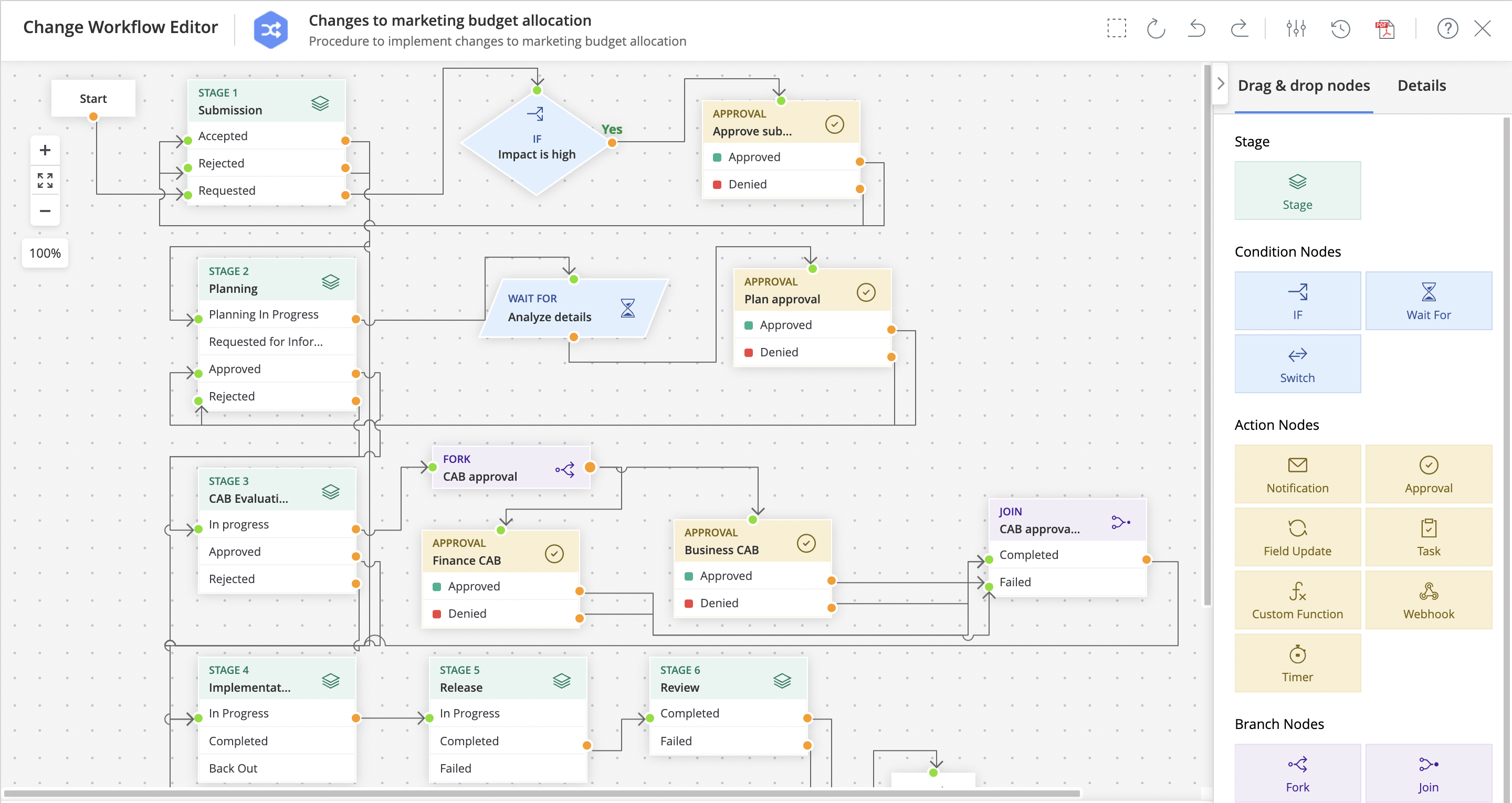
Synchronize upgrades to financial infrastructure, technology, and policies with tightly aligned modules for changes,
projects, and releases
- Plan long-term upgrades to financial infrastructure, technology, and policies with visual workflows to guide changes.
- Include finance teams as part of cross-departmental change advisory boards so they can oversee strategic financial policy changes.
- Visualize and manage resources to complete financial projects on time using milestones and Gantt charts.
- Prevent time and cost overruns by estimating the duration and cost of projects.
- Involve cross-functional release stakeholders when deploying enhancements to financial applications to minimize business downtime.
Supervise purchases and contracts and approve them quickly to ensure continuity in service delivery
- Link purchase orders to services and track general ledger codes to analyze the transactions of business teams.
- Associate invoices with purchases to ensure timely approvals and payments.
- Compare vendor details to optimize the purchase costs of products and services.
- Process vendor payments in the currency specified in the invoice.
- Provide quality services and products by signing and renewing contracts periodically.
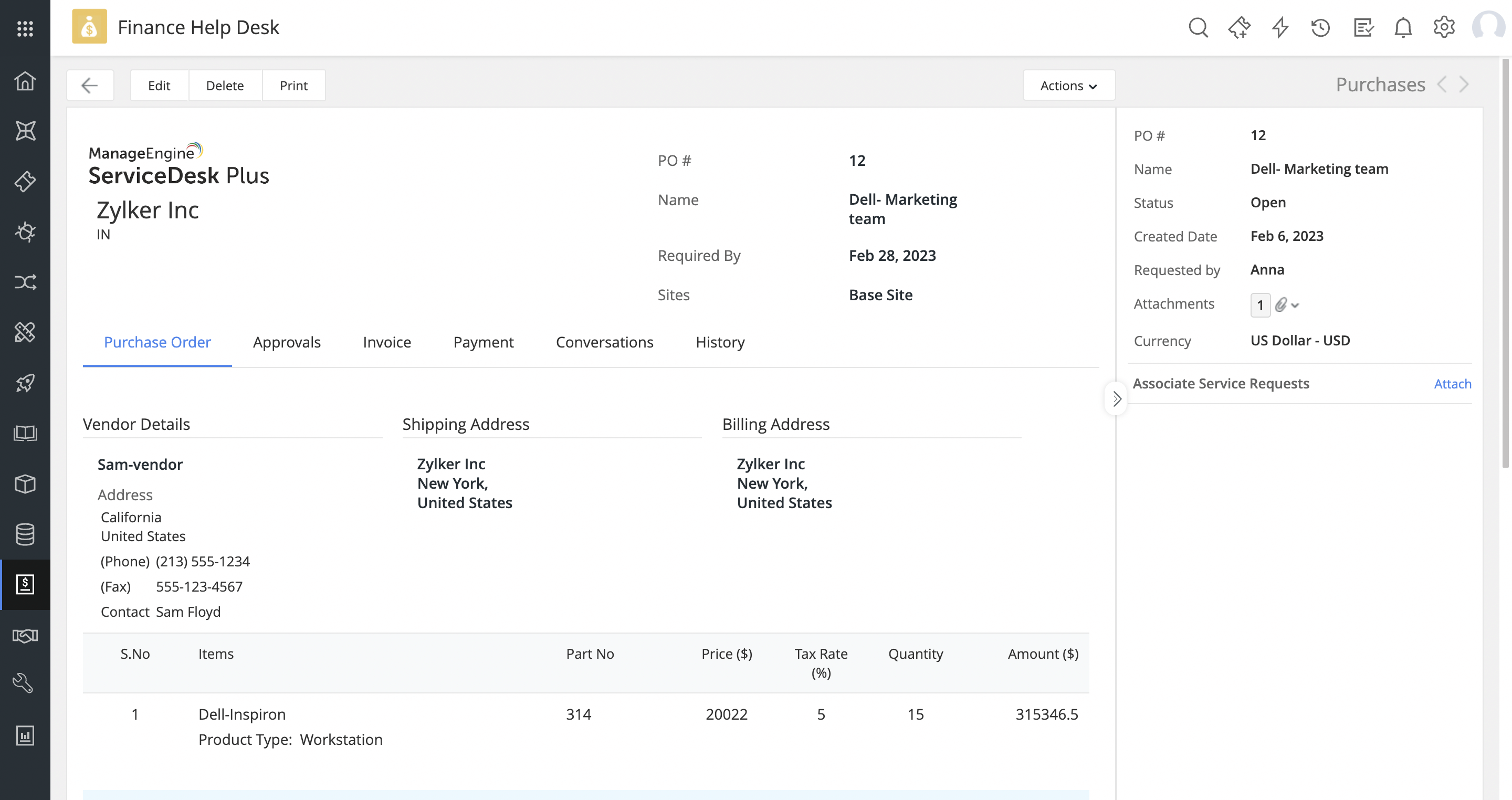
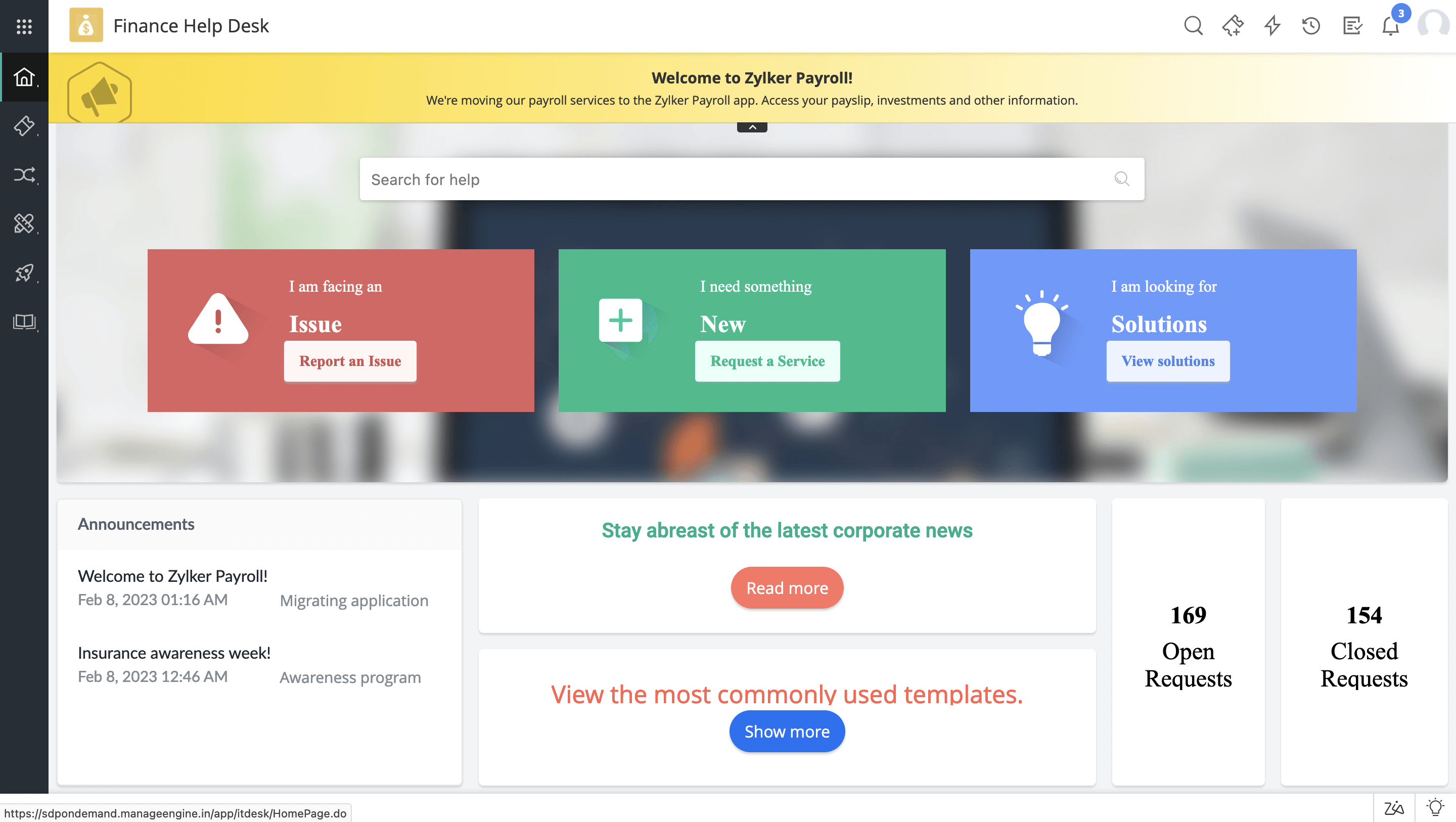
Allow users to self-serve and self-solve finance tickets with an up-to-date knowledge base
- Create knowledge articles about finance to answer common questions related to taxes, provident funds, payroll services, bank accounts, invoices, reimbursements, and more.
- Harness AI capabilities to suggest solutions automatically based on users' requirements.
- Design quick action widgets and publish announcements to help users stay in the know about financial policies.
Gather real time insights into finance metrics using advanced analytics
- Generate canned and custom reports to explore financial sore spots and initiate corrective actions to rationalize operational costs.
- Schedule financial reports periodically to analyze finance teams' performance and send the reports to key stakeholders.
- Track finance metrics like the timely opening of bank accounts to gauge the performance
of finance teams.
